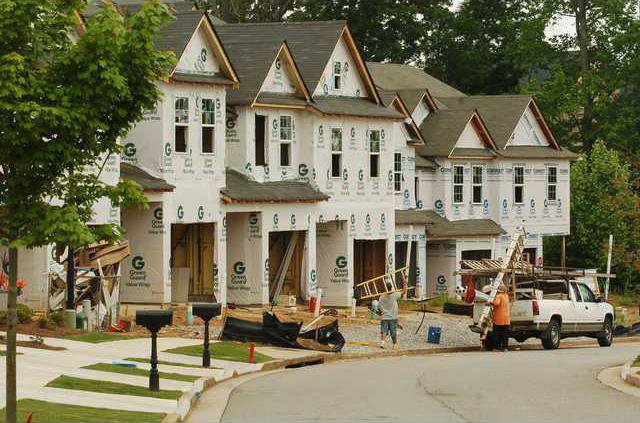0514CENSUSaud
Frank Norton, a real estate executive who monitors growth and economic trends, talks about the latest U.S. Census Bureau population estimate for Hall County.Against a quieter chorus of hammers, people have continued to pour into Hall County.
In population estimates released today, the U.S. Census Bureau shows that Hall grew by 33 percent between 2000 and July 1, 2008, marking it as the nation’s 85th fastest-growing county.
Hall housed 184,814 people in 2008, up from 178,620 in 2007, a 3.5 percent increase. The county grew 4.2 percent from 2006, when it had 171,444, according to the census numbers.
"I am not surprised by these numbers," said Frank Norton, a real estate executive who monitors growth and economic trends. "They continue to (be) a little lower than our internal projections. We think the county is somewhere between 195,000 and 200,000 people."
He added, "The Census is still playing a little bit of catch-up with the undercount we had in 2000, when they counted about 26,000 Hispanics. The (actual) number is substantially higher than that."
Also, "we still have some degree of housing permits happening — many of those in South Hall and many of those are residents moving in (from outside Hall) instead of across the county."
Hispanic residents accounted for 48,609, or 26 percent, of Hall’s 2008 estimate. That number is up from 45,921 in 2007. The 2000 Census showed that Hispanics made up 27,242, or 20 percent, of Hall’s 139,277 residents.
While Hall County’s growth occurred at a strong clip during the recession, which experts say began in December 2007, the effects of the recession tightening its grip into 2009 isn’t yet known, said Doug Bachtel, a demographics expert at the University of Georgia.
"We have to kind of dredge up the past a little bit," Bachtel said. "The recession has deepened. We can’t make the mistake of trying to apply what happened then to with what is happening now.
"However, Georgia is one of the fastest-growing states in the nation because we have this incredibly diverse economy. We’re still hurting from the recession, but we’re not hurting as much as other states."
The Census shows that Georgia grew to about 9.7 million residents in 2008 from 9.5 million.
Bachtel described Hall’s growth as "Gwinnett spillover," or part of Atlanta’s continued mushrooming, but noted the increase isn’t as "robust" as it has been in past years.
That’s the case in the past few years, but generally Hall is growing faster than it did in the first half of this decade.
Norton said homes built in 2006 and 2007 began selling in 2008. Also, apartment complexes built a few years ago are filling up.
"Our overall housing stock is today is about 25 percent less than (it was) 12 months ago," he said. "Some people have taken their houses off the market, but a large number have been sold."
Realtors have said that now is the time to strike if you want to buy a house and have decent credit.
Construction also is picking up in some places, such as Waterstone Crossing in Flowery Branch, a town-home development attracting buyers with a lower price range.
"We are considered a good, strong middle-class market and we’re getting some of that outward migration from Gwinnett and people from Forsyth County who would like to live in Forsyth but can’t afford the higher-priced house (there)," Norton said.
Forsyth County has been booming for many years and 2007-08 was no exception.
As the state’s fastest-growing county, it grew to an estimated 168,060 in 2008 from 158,111 in 2007. It is the country’s sixth-fastest growing county, jumping from 98,407 residents in 2000, or by 71 percent.
Gainesville is tied for third among the fastest-growing metropolitan areas in the U.S. between 2007-08, according to Census Bureau estimates released in March.
The other cities are Kennewick-Pasco-Richland, Wash., and Palm Coast, Fla.

